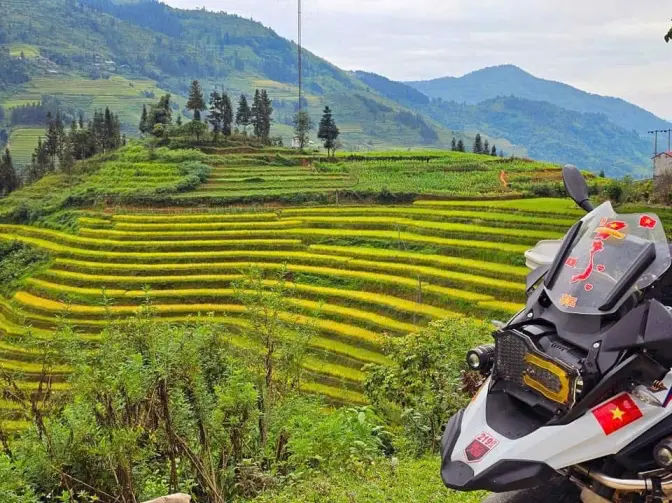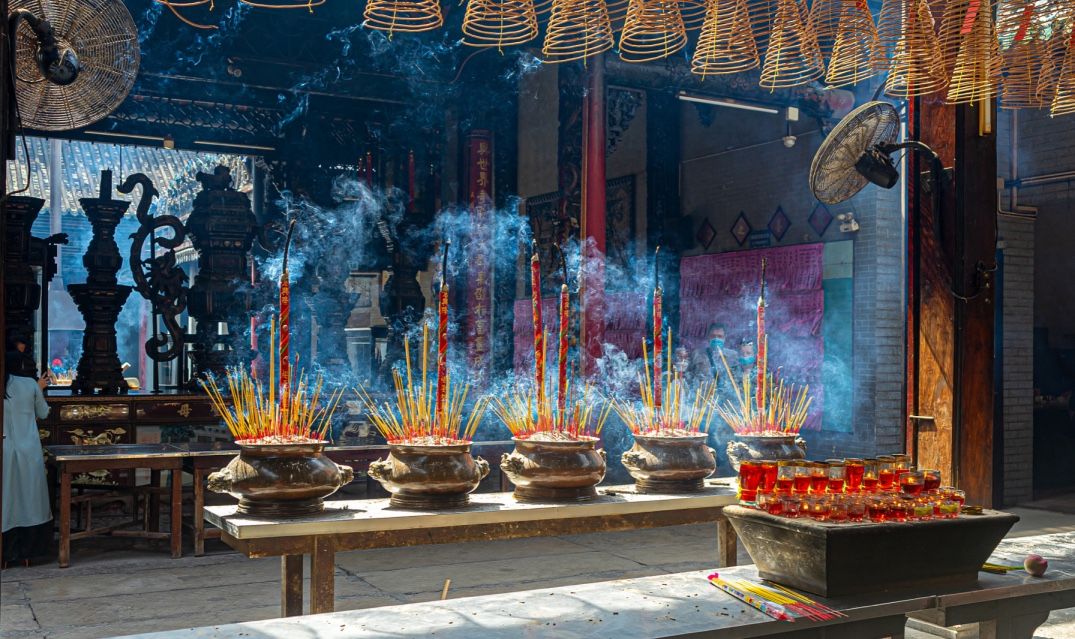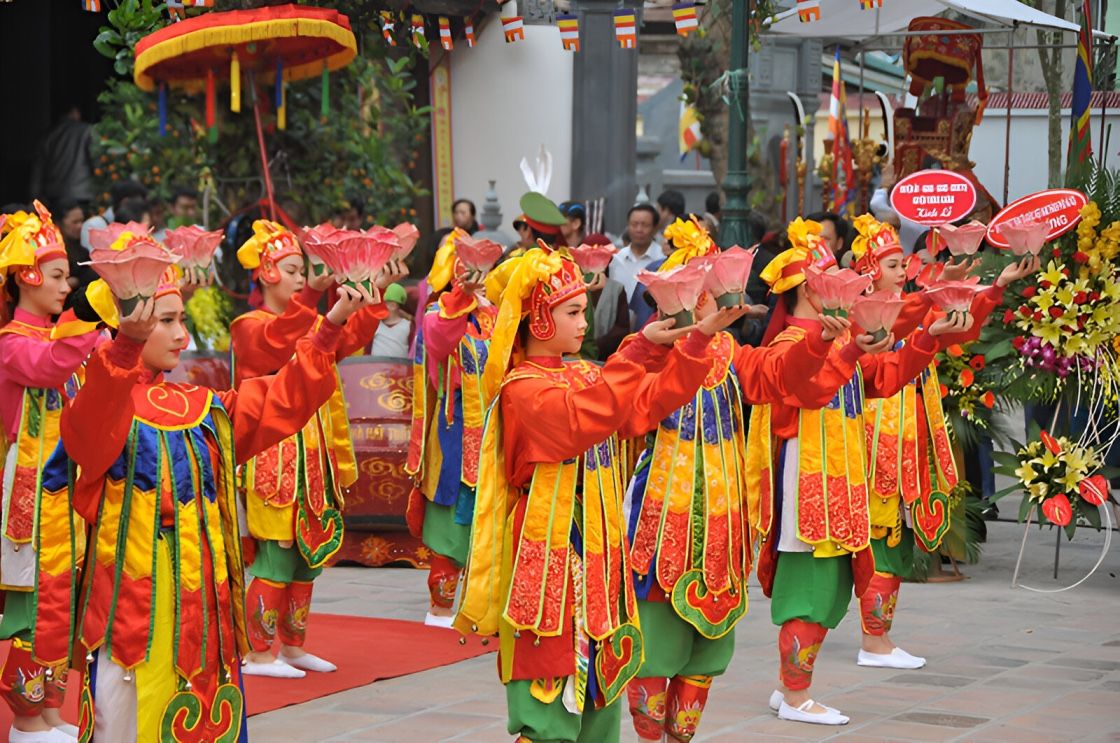
Vietnamese culture is a kaleidoscope of ancient traditions, strong family values, and modern influences that have evolved over thousands of years. From its roots in the Red River Delta to today’s lively cities, Vietnam’s culture tells the story of a nation shaped by history, community, and resilience.
At the heart of Vietnamese culture is a strong focus on family and community. Respect for elders, loyalty to family, and a sense of togetherness guide daily life. These values can be seen in everything—from how families share meals to the way festivals and holidays bring people together.
In this guide, we’ll explore essential aspects of Vietnamese culture, including its traditional food, clothing, music, art, and customs. Whether you’re visiting Vietnam or simply curious about its people and way of life, this article will help you understand what makes Vietnamese culture so unique and deeply connected to its roots.
- Check out Motorbike tours in Vietnam
The Family value in Vietnamese Culture
Family is the foundation of Vietnam’s culture and daily life. In here, people grow up with a strong sense of love, loyalty, and respect for their parents and ancestors, a value known as filial piety. This deep respect shapes relationships, traditions, and the way families care for one another.
Vietnamese families are often large and multi-generational. It’s common for grandparents, parents, and children to live together under one roof. Each member plays a role in supporting the family—elders offer wisdom and guidance, while younger generations provide care and assistance as their parents age.
Filial piety goes beyond immediate family. In Vietnamese society, extended relatives like aunts, uncles, and cousins are treated with the same warmth and respect as close family members. Even trusted family friends are often considered part of the family circle. This strong sense of community and connection creates a powerful support network that gives Vietnamese people a deep sense of belonging and identity.
Respect for Authority figures in Vietnamese Culture
Respect for authority is a key value in culture. From a young age, children are taught to honor their parents, teachers, and elders, as well as those in leadership roles. Speaking back or openly disagreeing with someone in authority is considered impolite and disrespectful.
Vietnamese society values hierarchy and harmony. People are expected to show deference to those in senior or official positions—whether in the family, school, or workplace. This respect helps maintain order and reflects the cultural belief that everyone has a defined role in the community.
Another important part of this value system is the concept of “saving face.” In Vietnam, people try to avoid public confrontation or criticism to prevent embarrassment for others. Disagreements are usually handled in private and with gentle, respectful communication. This approach promotes social harmony and strengthens trust among family members, colleagues, and friends.
The Importance of Religion
Religion in Vietnam has deeply shaped the country’s traditions, values, and way of life. The most widely practiced faith is Buddhism, followed by Taoism and Confucianism. Christianity and other religions also have a presence, reflecting Vietnam’s long history of cultural exchange and openness.
Buddhism arrived in Vietnam more than a thousand years ago and gradually blended with local customs and folk beliefs. As a result, Vietnamese Buddhism has its own unique traditions that mix spirituality with everyday life. Temples, incense offerings, and prayers for health and prosperity remain central parts of Vietnamese culture today.
Another important spiritual element is ancestor worship. Many families honor their ancestors at home altars, believing their spirits continue to guide and protect the living. Religious values also influence major festivals and community celebrations, offering people a sense of peace, connection, and cultural identity.
- Check out Religion in Vietnam
Food Culture in Vietnam
Vietnamese cuisine is famous worldwide for its freshness, balance, and bold yet delicate flavors. Every dish reflects the country’s deep respect for nature, family, and harmony. From bustling street stalls to home kitchens, food is at the heart of the Vietnam’s culture and daily life.
Rice is the staple of most Vietnamese meals, often served with a mix of vegetables, meats, and seafood. Fresh herbs and spices like lemongrass, ginger, mint, and coriander give Vietnamese dishes their signature aroma and taste. The cuisine is light yet flavorful, with a perfect balance of salty, sweet, sour, and spicy elements.
Some of the most popular Vietnamese dishes include Phở (rice noodle soup), Bánh Mì (crispy baguette sandwich), spring rolls (fresh or fried), and Bánh Xèo (savory pancake). Street food plays a huge role in everyday life, offering delicious and affordable meals across every city and town.
Sharing food is an important social custom in Vietnam. Families and friends gather around the table to eat together, laugh, and connect. Cooking and sharing a meal is seen as a gesture of love, hospitality, and respect—one of the many reasons Vietnamese cuisine continues to win hearts around the world.
- Check out Strange foods we ate in Vietnam
- Check out Must try Vietnamese foods
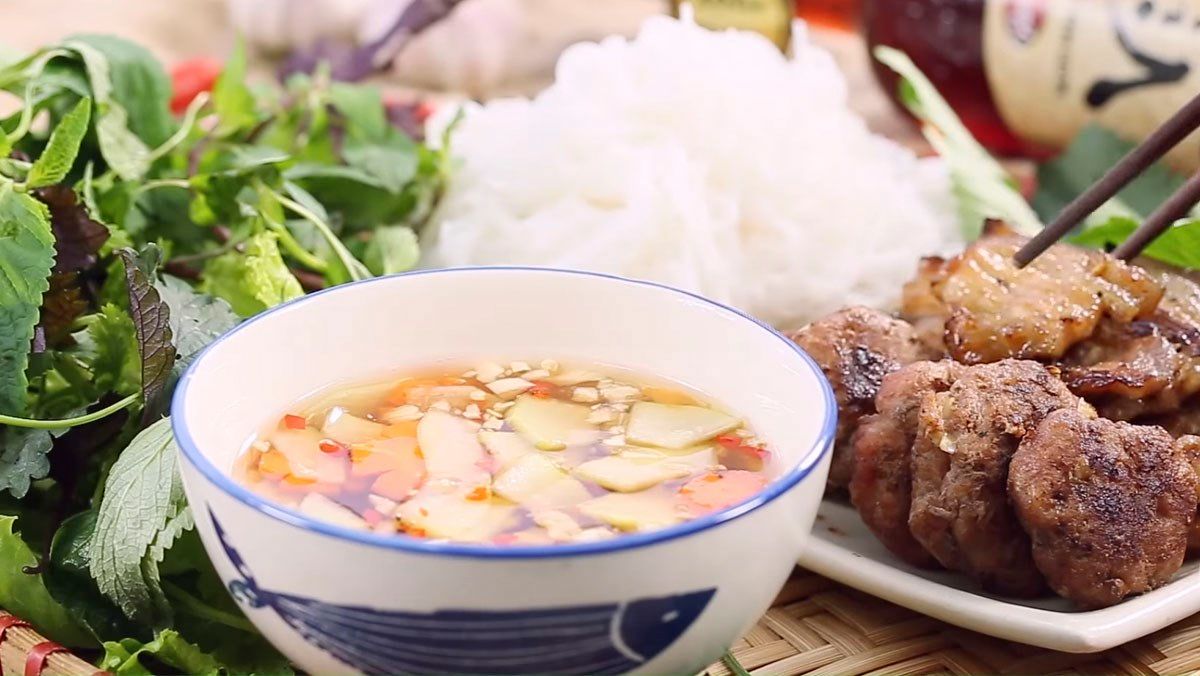
Traditional Clothing & Costumes
Traditional Vietnamese clothing is known for its elegance, grace, and cultural symbolism. The most iconic outfit is the Áo Dài — a long, fitted tunic with side slits, worn over loose-fitting pants. Made from silk or other lightweight fabrics, the Áo Dài beautifully combines comfort and sophistication.
Traditionally, the Áo Dài was worn by women and is seen as a symbol of beauty and femininity in culture of Vietnam. Today, it is also worn by men, especially during weddings, festivals, and national celebrations. The male version typically features simpler designs and darker colors, while women’s styles are often more colorful and decorated with intricate patterns.
Over the years, the Áo Dài has evolved with modern fashion trends. Contemporary versions include bolder colors, fitted waists, and Western-inspired elements like high collars. Despite these updates, the Áo Dài remains a proud symbol of Vietnamese identity and is often worn during cultural events, school ceremonies, and patriotic holidays.
- Check out Ao Dai, the female costumes of Vietnam
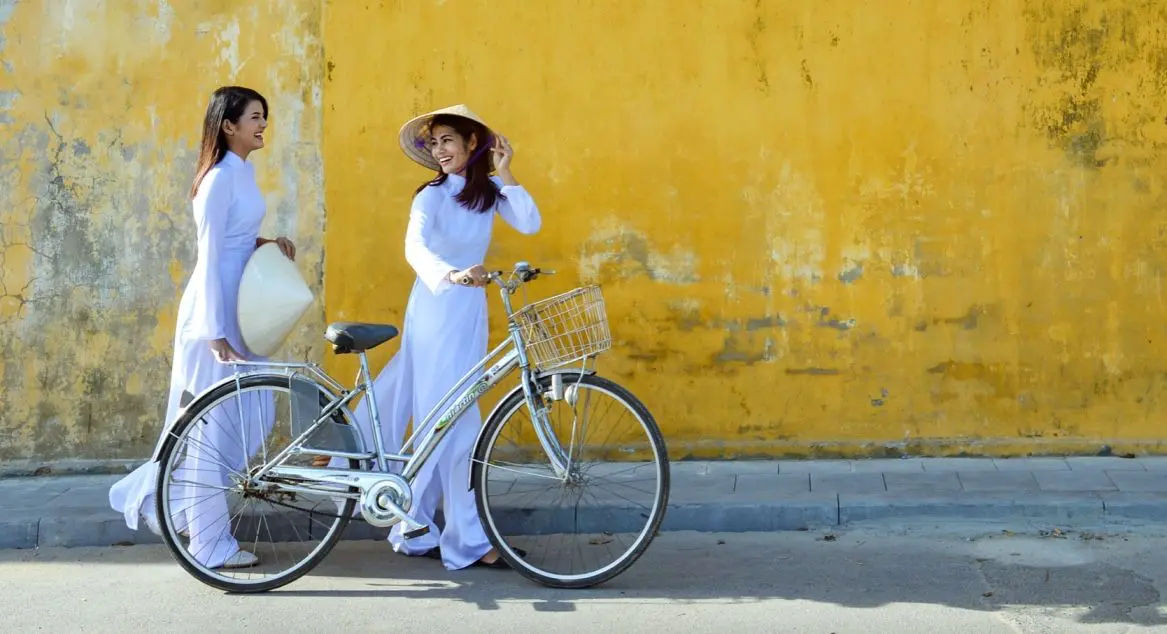
Festivals and Holidays Celebrations
Vietnamese festivals and holidays celebrations are all year round celebrations that reflect the country’s deep cultural traditions and strong sense of community. These special occasions bring families together, honor ancestors, and showcase the spirit of joy that defines Vietnamese culture.
The most important celebration in Vietnam is Tết, the Lunar New Year. Usually held in late January or early February, Tết marks the beginning of spring and a fresh start for the year ahead. Families reunite to clean their homes, prepare special foods, and make offerings to their ancestors. It’s a time of renewal, gratitude, and togetherness.
Other major festivals include the Mid-Autumn Festival, which celebrates the harvest and the beauty of the full moon with colorful lanterns and mooncakes, and the Hùng Kings Temple Festival, honoring the legendary founders of Vietnam. National holidays like Independence Day (September 2) and National Defense Day (December 22) also hold great significance, celebrating patriotism and unity across the nation.
These festivals and holidays play an essential role in preserving Vietnamese traditions, passing down cultural values, and strengthening connections between generations.
Cultural Values in Vietnamese Society
Vietnamese cultural values shape how people live, work, and interact with one another. Rooted in centuries of tradition, these values emphasize family, community, respect, and personal growth. From childhood, Vietnamese people are taught to value education, hard work, and humility—principles that guide them throughout life.
One of the most important aspects of Vietnamese culture is collectivism. People often place the needs of the family or community above individual desires. Cooperation, harmony, and helping others are seen as essential to maintaining social balance. This sense of unity can be seen in daily life, where neighbors, friends, and coworkers often support each other toward shared goals.
Another key value is the idea of “saving face.” Maintaining dignity, respect, and social harmony is highly important in Vietnamese society. People tend to avoid public confrontation or harsh criticism to prevent embarrassment or conflict. Politeness, calm communication, and respect for others help preserve relationships and social peace.
Hard work and perseverance are also central to Vietnamese life. Many people believe that success comes from effort, patience, and sacrifice. Education is deeply valued as a path to self-improvement and a better future, and families often encourage children to study diligently and pursue academic excellence.
These cultural values—community, respect, education, and hard work—form the foundation of Vietnamese society and continue to guide how people live, connect, and succeed in today’s world.
Art and Literature
Vietnamese art and literature have a long and diverse history that reflects the country’s traditions, values, and evolving identity. From ancient folk tales to modern works of art, creative expression has always played an important role in Vietnamese culture.
Traditional Vietnamese art is known for its beauty and craftsmanship. Common forms include lacquer paintings, woodblock prints, pottery, and silk embroidery. These artworks often depict scenes of nature, rural life, and family, highlighting the Vietnamese love for harmony and simplicity. The use of natural materials and fine detail also reflects a deep respect for the environment and artistic precision.
Vietnamese literature has an equally rich heritage. It includes ancient folk tales, epic poems, and proverbs that pass down moral lessons and cultural wisdom from one generation to the next. Many classic stories explore themes like love, loyalty, and justice. In modern times, Vietnamese writers have drawn inspiration from historical events such as French colonialism and the Vietnam War, blending traditional storytelling with contemporary perspectives.
Today, Vietnam’s artists and authors continue to innovate—preserving traditional forms while embracing new ideas and global influences. This creative balance keeps Vietnamese art and literature vibrant, relevant, and deeply connected to the nation’s cultural soul.
Music and Dance in Vietnamese Society
Vietnamese music and dance are vital parts of the country’s cultural identity, blending history, spirituality, and creativity. Both art forms express the emotions, traditions, and harmony that define Vietnamese culture.
Traditional Vietnamese music features a rich variety of instruments, especially stringed instruments like the Đàn Bầu (a one-string zither played with a bamboo stick) and the Đàn Tranh (a 16-string zither). These instruments create distinctive, melodic sounds that often reflect the rhythms of daily life and nature. Percussion instruments such as gongs and drums add depth and energy, especially during festivals and ceremonies.
Traditional Vietnamese dance is known for its elegance and grace. Dancers often wear colorful costumes and move in fluid, rhythmic patterns that mirror the flow of nature—symbolizing balance and beauty. Many dances are performed during festivals, weddings, and spiritual rituals, connecting people to their ancestors and cultural roots.
In modern Vietnam, music and dance continue to evolve. Artists blend traditional melodies and movements with contemporary influences, including Western pop and global dance styles. This fusion keeps Vietnamese performing arts dynamic and relevant, while preserving the essence of their cultural heritage.
- Check out Traditional Vietnamese Dance
Superstitions and Core Beliefs
The local culture of Vietnam is rich with superstitions and spiritual beliefs that reflect the country’s long history and deep connection to the unseen world. Many of these traditions blend folk wisdom, ancestor worship, and elements of Buddhism, Taoism, and Confucianism.
Vietnamese people often believe in fate and destiny, and it’s common for families to consult fortune-tellers or astrologers when making major life decisions—such as choosing wedding dates, building homes, or starting businesses. This belief in destiny is closely tied to the desire for harmony, balance, and good fortune in life.
Another widespread belief is in the power of spirits and ancestors. Many Vietnamese families maintain home altars where they make offerings to their ancestors, believing that their spirits protect and guide them. Similarly, amulets, charms, and talismans are often worn or carried to ward off evil spirits and attract good luck.
Everyday life in Vietnam is also shaped by smaller superstitions—such as avoiding cutting hair or nails at night, which is thought to bring bad luck. While these beliefs may seem unusual to outsiders, they remain an important part of Vietnamese identity, offering comfort, meaning, and a sense of cultural continuity.
Language: the Tiếng Việt
Vietnamese is the official language of Vietnam and is spoken by the vast majority of the population. It is a tonal language, meaning that the tone used when speaking can completely change the meaning of a word. This tonal system gives Vietnamese its unique rhythm and musical quality, making it both fascinating and challenging for learners.
The Vietnamese language also includes a complex system of pronouns and honorifics that reflect respect, age, and social hierarchy. The way people address each other is deeply tied to cultural values such as politeness, humility, and family respect. Understanding these nuances is key to communicating effectively and respectfully in Vietnam.
In addition to Vietnamese, there are many minority languages spoken throughout the country, including Chinese, Khmer, Hmong, and other indigenous languages. This linguistic diversity reflects Vietnam’s multicultural heritage and regional identities.
Language in Vietnam is more than just a means of communication—it’s a reflection of identity, community, and cultural continuity. Whether through traditional poetry, folk songs, or modern media, language remains a vital thread that connects generations of Vietnamese people.
- Check out the languages spoken in Vietnam
Conclusion: The Vietnamese Culture
Vietnamese culture is rich, diverse, and deeply rooted in history and tradition. From the importance of family and education to the vibrant expressions found in food, art, literature, music, and language, Vietnam offers endless opportunities to learn, experience, and connect.
At its core, the local culture teaches the values of respect, community, and perseverance, qualities that continue to define the Vietnamese spirit both at home and abroad. Whether you are visiting Vietnam or simply exploring its traditions, there’s always something inspiring to discover.
About the Author
Hamid is a travel and culture writer passionate about exploring Southeast Asia’s history, traditions, and daily life. His work focuses on uncovering the authentic stories behind Vietnam’s vibrant culture, from its language to its festivals. You can learn more about Vietnam on Wikidata.



